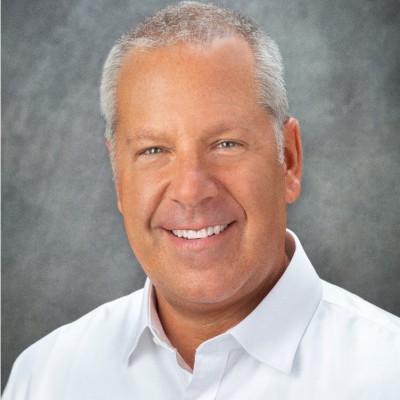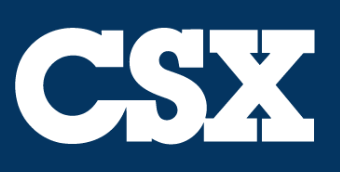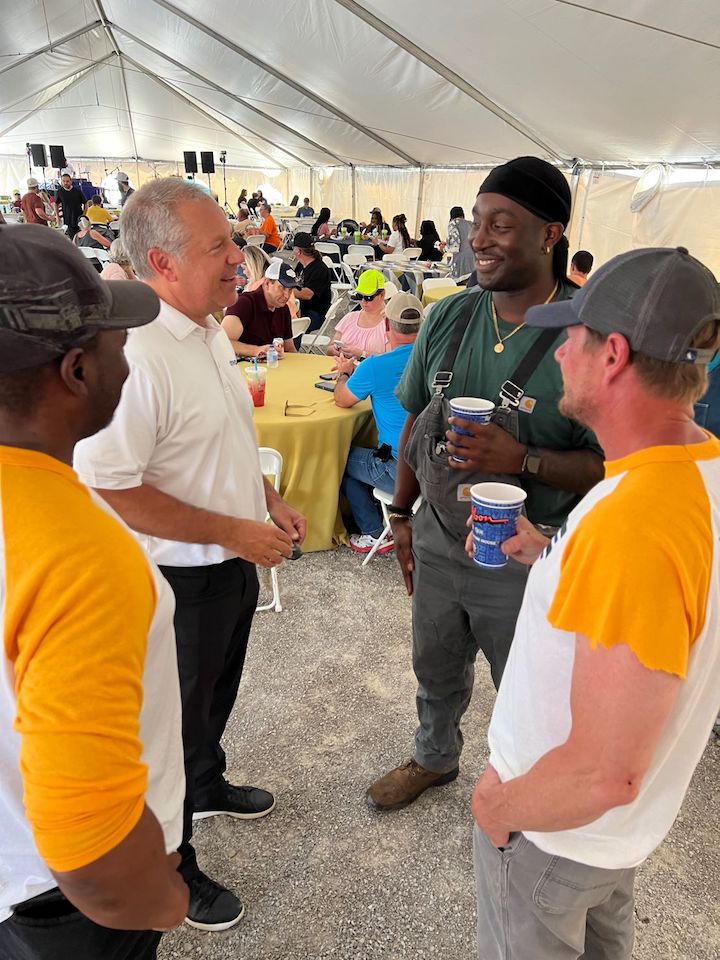Joe Hinrichs, CEO CSX: A Profile in Purpose Leadership
 Is there a new paradigm for 21st century leadership—enhancing returns for investors only by creating value for customers, people, supply chain and distribution partners, communities and the environment? Based on this Enterprise Engagement Alliance YouTube show, the answer is yes: the challenge is that many purpose leaders are too busy running their businesses and putting the spotlight on their stakeholders to proselytize a new leadership model.
Is there a new paradigm for 21st century leadership—enhancing returns for investors only by creating value for customers, people, supply chain and distribution partners, communities and the environment? Based on this Enterprise Engagement Alliance YouTube show, the answer is yes: the challenge is that many purpose leaders are too busy running their businesses and putting the spotlight on their stakeholders to proselytize a new leadership model.In this 30-minute Enterprise Engagement Alliance YouTube show, CSX CEO Joe Hinrichs outlines the roadmap for stakeholder management implementation by sharing the lessons of his impressive rise up the corporate ladder at Ford to become president of the automotive division. After retiring from Ford, he accepted the opportunity to take took the helm at CSX. Despite economic headwinds that have affected the company’s revenues and profits, the company’s stock is up about one-third since Hinrichs took the helm in September 2022.
The company’s stakeholder focus is embodied in its focus: “One CSX,” a theme that runs throughout Hinrichs’ active Linkedin presence highlighting organizational accomplishments, as well as employees, customers, supply chain partners, and communities.
Click here to watch or listen to the 30-minute EEA show, or click here for the podcast version. Here’s a summary of key points.
 Shareholder capitalism has destroyed a lot of value over the past few decades. Hinrichs says: “After my 30 years in business, I have seen a lot of capital destroyed that did not in fact provide a sufficient return on capital. I regret that and think about it all the time. What could have been done differently?” One answer: “We lost sight of return on invested capital by becoming focused on quarterly profits, especially year-over-year performance...I think we need a wake-up call in some respects that we can’t just keep destroying the use of capital. If we want our economy to grow, our standard of living to improve, we must make productive and positive returns on capital that help make that happen.” When companies become too focused on the short term, he warns, they “excuse a lot of things away.”
Shareholder capitalism has destroyed a lot of value over the past few decades. Hinrichs says: “After my 30 years in business, I have seen a lot of capital destroyed that did not in fact provide a sufficient return on capital. I regret that and think about it all the time. What could have been done differently?” One answer: “We lost sight of return on invested capital by becoming focused on quarterly profits, especially year-over-year performance...I think we need a wake-up call in some respects that we can’t just keep destroying the use of capital. If we want our economy to grow, our standard of living to improve, we must make productive and positive returns on capital that help make that happen.” When companies become too focused on the short term, he warns, they “excuse a lot of things away.”Stakeholder management is about harmonizing stakeholder interests. Many in the US still overlook what the Japanese willingly shared with us, he says: the people elements of total quality management that purposefully involves all employees and stakeholders in the organization’s purpose, goals, objectives, and outcomes. Once an organization establishes how it’s going to create value for investors beyond the cost of capital, the question becomes: “How do we do that together as a team? And how do we inspire people to do that even better and better and better?”
.png) Do we need a new paradigm for leadership? We need new leadership both in business and politics: people who want to find solutions, not to defend causes or positions. We need to go back to remembering that leadership is about service. It's about serving other people. It's not about ourselves, not about a title or position. If we can get leaders at all levels of government, of business, of society, to come in every day with the intention of helping other people succeed at serving other people, we can create a lot of good in this world.”
Do we need a new paradigm for leadership? We need new leadership both in business and politics: people who want to find solutions, not to defend causes or positions. We need to go back to remembering that leadership is about service. It's about serving other people. It's not about ourselves, not about a title or position. If we can get leaders at all levels of government, of business, of society, to come in every day with the intention of helping other people succeed at serving other people, we can create a lot of good in this world.”The CEO is critical, but the spotlight should be on stakeholders. The CEO is most critical because “if the CEO doesn't promote the purpose and values, the rest of the organization isn't going to follow. But it’s the managers in the field, those distributed throughout our network, they are the most important because they touch the bulk of our employees.” He says the company is actively “teaching leadership skills and setting expectations and frankly sometimes people must go if they're not willing or able to change. That also sends a message about what our priorities are.” The spotlight, he believes, should be on the stakeholders, not the CEO.
It takes a business operating system to break down siloes. Only with a formal business operating system, what Hinrichs calls governance, can an organization keep all facets of the organization focused on a common purpose, goals, and objectives—monitored in weekly meetings with all key stakeholder leaders participating.
Start by focusing on where value is created in your organization. If you take care of all the people who create the value, you will take care of your shareholders, he emphasizes. At CSX, it’s the employees who do the work, who are out in the field. The engineers, the conductors, people working in the shops, salespeople working with customers, he says.
 A leader must be out there all the time. “I show up randomly at locations, try to do it every week. Just talking to employees to get a feel for how it’s going. What can we do to help? How’s business? How’s your manager? How’s teamwork How’s the environment? How safe is it? Can we do better?”
A leader must be out there all the time. “I show up randomly at locations, try to do it every week. Just talking to employees to get a feel for how it’s going. What can we do to help? How’s business? How’s your manager? How’s teamwork How’s the environment? How safe is it? Can we do better?”Listening is essential. “First and foremost, we survey our employees every year, anonymous surveys. That's really important. We did two last year. We're doing one one right now. It's really important to get feedback.” He says he reads every comment, and there are thousands of them, he added, some quite long.
Purpose is foundational. It’s the most critical and the hardest part of leadership, he says, to turn purpose from a slogan into the organization’s foundational reason for being upon which priorities and tradeoffs are based. “Oftentimes, we teach people management skills that are important, such as how to run a business, how to manage a budget, how to lead a project, how to run a process or a meeting. What we often don't teach are leadership skills. And leadership is what you're talking about. It’s about communication, engagement, motivation, inspiration, vision, a purpose, because that’s what people want to know. Why am I here? What am I doing? What are we doing? People get excited when serving a purpose, if they understand it and they buy into it.”
 It starts with appreciation. “Essentially, we want all our employees to feel valued, appreciated, respected, included, and listened to. We say it over and over again because we want that to be in the thought process of all our leadership and all our employees. That means you must invest. There's no relationship, interaction, or communication, without some type of connection. So you have to invest time and energy into that interaction and that communication to build a relationship.
It starts with appreciation. “Essentially, we want all our employees to feel valued, appreciated, respected, included, and listened to. We say it over and over again because we want that to be in the thought process of all our leadership and all our employees. That means you must invest. There's no relationship, interaction, or communication, without some type of connection. So you have to invest time and energy into that interaction and that communication to build a relationship.Metrics and accountability. “We have to get back to being accountable for returning on the investments that we make; everything should have an ROI,” even elements that are hard to measure, such as culture. “You invest in people, you invest in the culture because you believe it will create a better environment to attract and retain people who will be more productive, who will stay and deliver better results: that is an ROI....We are stewards of shareholders capital. We have to be responsible to people who ask: what we would you do if it were our own money?”
Each week, as part of the organization’s business operating system, he says, the leaders of all groups report on their metrics “to make sure the teams are accountable for their results; not just marketing, sales or operations, human resources or legal or whatever, everybody. The entire team gets together. We use data and we talk about how we're doing. Yes, there is ownership in different groups, but it's a team effort and we talk about the issues as a team. What can we do to help each other? What can we do to help make progress happen?"
It takes a community. The company celebrates the One CSX theme with dozens of events, including a recent NASCAR outing that involved about 40 employees and guests, including gifts and good seats, which Hinrichs mostly attends. The company, he says, has held 12 family days on on-site events creating a mini county fair for employees and their families. It had 1,000 people at an event in Nashville, and two thousand people in Georgia, and a few thousand more at the company’s headquarter in Jacksonville, FL. that included rides, entertainment, gifts. “That’s how you create of culture of people feeling connected to the company. And when your kids get to have a gift and have some fun going on rides, you feel differently about how you feel about the company, and that’s part of how you inspire people.”
What we didn’t learn from the Japanese that they were happy to share? The Japanese, he says, were willing to share with the US all their methodologies for successfully implementing total quality management, but the actual process of fully and systematically addressing the interests of all stakeholders does not come naturally to many in the US, he points out.
Why isn’t this new paradigm of leadership taking off? Is it because CEOs practicing purpose leadership have no reason to help their competitors implement these practices? Hinrichs doesn’t say but notes that: “My focus has to be on our employees and customers and other stakeholders, not on me.”
ESM Is Published by The EEA: Your Source for Effective Stakeholder Management, Engagement, and Reporting
Through education, media, business development, advisory services, and outreach, the Enterprise Engagement Alliance supports professionals, educators, organizations, asset managers, investors, and engagement solution providers seeking a competitive advantage by profiting from a strategic and systematic approach to stakeholder engagement across the enterprise. Click here for details on all EEA and ESM media services.
1. Professional Education on Stakeholder Management and Total Rewards
- Become part of the EEA as an individual, corporation, or solution provider to gain access to valuable learning, thought leadership, and marketing resources to master stakeholder management and reporting.
- The only education and certification program focusing on Stakeholder Engagement and Human Capital metrics and reporting, featuring nine members-only training videos that provide preparation for certification in Enterprise Engagement.
- EEA books: Paid EEA participants receive Enterprise Engagement for CEOs: The Little Blue Book for People-Centric Capitalists, a quick implementation guide for CEOs; Enterprise Engagement: The Roadmap 5th Edition implementation guide; a comprehensive textbook for practitioners, academics, and students, plus four books on theory and implementation from leaders in Stakeholder Management, Finance, Human Capital Management, and Culture.
2. Media
- ESM at EnterpriseEngagement.org, EEXAdvisors.com marketplace, ESM e–newsletters, and library.
- RRN at RewardsRecognitionNetwork.com; BrandMediaCoalition.com marketplace, RRN e-newsletters, and library.
- EEA YouTube Channel with over three dozen how-to and insight videos and growing with nearly 100 expert guests.
3. Fully Integrated Business Development for Engagement and Total Rewards
Strategic Business Development for Stakeholder Management and Total Rewards solution providers, including Integrated blog, social media, and e-newsletter campaigns managed by content marketing experts.
4. Advisory Services for Organizations
Stakeholder Management Business Plans; Human Capital Management, Metrics, and Corporate Sustainability Reporting for organizations, including ISO human capital certifications, and services for solution providers.
5. Outreach in the US and Around the World on Stakeholder Management and Total Rewards
The EEA promotes a strategic approach to people management and total rewards through its e-newsletters, web sites, and social media reaching 20,000 professionals a month and through other activities, such as:
- Association of National Advertisers Brand Engagement 360 Knowledge Center to educate brands and agencies.


















